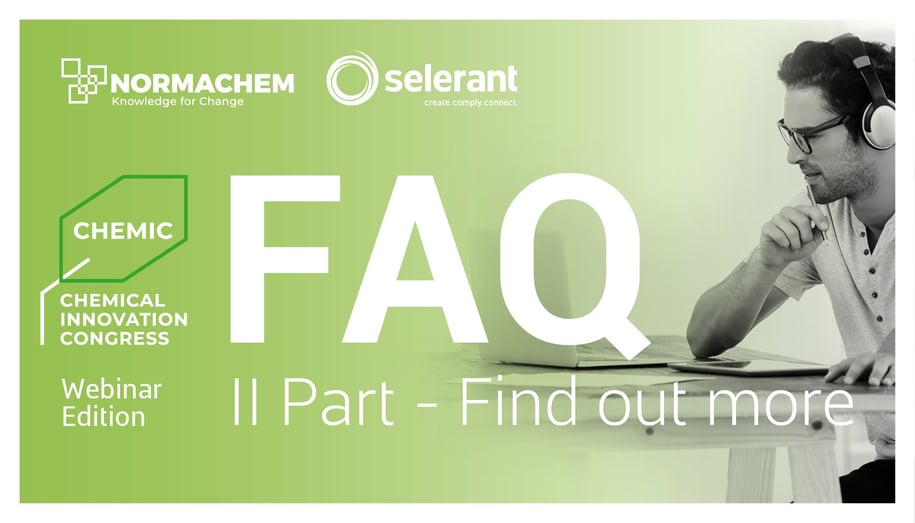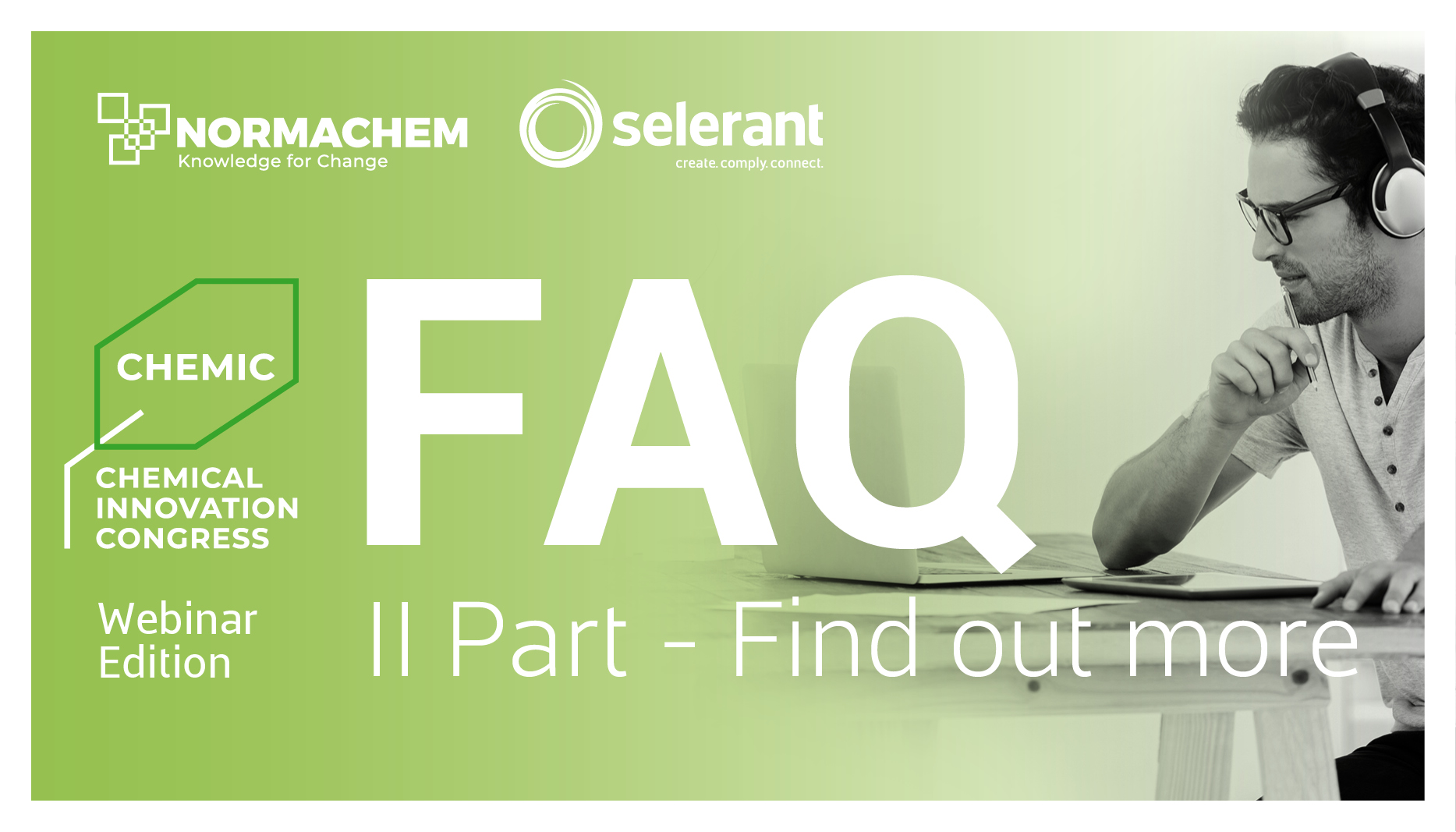
ChemIC 2020 FAQ Part II - Discover more on EU Declaration and Annex VIII
Posted By:
Trace One

FAQs from ChemIC 2020 online event - Part II
Following the CHEMIC webinar, hosted in collaboration with Normachem, we found useful to gather the most frequently asked questions to cover some of the less clear aspects of Annex VIII and the EU declaration. As for the previous month, below we have collected some of the most frequently asked questions: from the current implementation status of Annex VIII in the various Member States to more technical aspects.
Here are some of the most frequently asked questions:
Will there be exemptions for the point of sale paints (i.e. bespoke paints)?
ECHA is already aware about the issue of point of sale paints (POS): the European Commission acknowledged the impossibly high number of submissions required to cover each combination of base paint and tinters (“Bespoke paints”) generated for consumers at the point of sale. Furthermore, as reported in paragraph 6,7 and 8 of the provisional text of the second amendment of Annex VIII, only a limited number of emergency accidents are attributable to this type of product.
The Commission is currently considering an exemption for bespoke paints from the normal submission criteria, pointing out that all the UFI codes of dangerous tinters used for the bespoke paint need to be indicated in the final label of the paint.
These actions, if confirmed within the official publication of the second Amendment of Annex VIII expected in late 2020, would entail the introduction of a new paragraph (8) in article 25 of Regulation 1272/2008 (CLP).
For more information concerning the provisional text of the second amendment of Annex VIII, please follow this link.
Where should I print the UFI code? Should I report it on the label or on the packaging? What about SDS?
According to the modification of paragraph 5.2 provided with the first amendment of Annex VIII (Regulation 2020/11), the submitter may print or affix the UFI code on the inner packaging located with the other label elements.
In the case of products without a label (i.e. unpackaged mixtures) the UFI code must be listed in Section 1.1 (Product identifier) of the SDS. In the case a label is provided, the UFI code could be also voluntarily reported in the SDS. We remind you that, in this case, an update of the UFI code would imply an SDS update.
For further details concerning the updates introduced with the first amendment of Annex VIII, please follow this link.
What are the obligations of the distributors?
According to ECHA, distributors (including re-branders, re-labellers and retailers) have to comply with article 4(10) of Regulation 1272/2008 (CLP) and, therefore, have to make sure to place products only in those Member States where the supplier has already made the submission and/or without changing the product identifiers.
In the case the distributor would like to place the product on the market of a Member State which is not included in the original submission and/or with a different brand name, the distributor can either communicate the relevant information to his supplier by asking him to add them in the original submission, or he can forward his own submission to the appointed body.
I use a raw material whose composition is not fully known (MiM) and the supplier has not communicated the UFI code (or he has not made a submission in the Countries where the product is intended to be sold). How should I proceed?
In the case of a hazardous mixture containing a mixture whose composition is not fully known (MiM, Mixture in Mixture) is placed on the market, Annex VIII prescribes the need to include the UFI code of the MiM’s supplier in the submission of the final mixture. This UFI code can be used only if previously received by the appointed bodies of the Member States where the final mixture will be marketed.
If the MiM’s UFI code is not available or cannot be used (information on the MiM has not been previously submitted to the relevant appointed body), it is possible to identify the MiM by including in the submission the known components of the MiM (i.e. components present in section 3.2 of SDS) and the supplier’s details.
For further details about the Trace One solution on Annex VIII, visit the following link or contact our Customer Service at EU-customer-service@selerant.com.
Newsletter 133